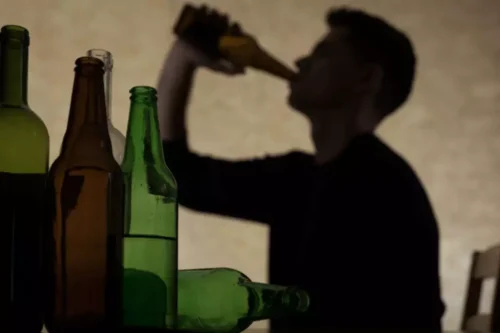
The alcohol is still affecting their bodies, even if they do not immediately feel it, and they are still at higher risk of falls, cognitive impairment and other negative effects because they are drinking more. Both forms of rehabilitation are effective solutions at combatting wine addiction, and there is a variety of different types of both inpatient and outpatient rehabilitation to suit the personal needs of each individual. Medical detox helps to reduce withdrawal symptoms, prevent complications during withdrawal, and prepare a patient for behavioral treatment.

You deserve excellent care and a rewarding life in recovery.
Chronic alcohol use raises your risk for health problems, including heart disease, liver disease, cancer, and mental health disorders. Suboxone (buprenorphine/naloxone) is indicated for the treatment of opioid dependence in adults. Suboxone should not be taken by individuals who have been shown to be hypersensitive to buprenorphine or naloxone as serious adverse reactions, including anaphylactic shock, have been reported. Taking Suboxone (buprenorphine/naloxone) with other opioid medicines, benzodiazepines, alcohol, or other central nervous system depressants can cause breathing problems that can lead to coma and death. Other side effects may include headaches, nausea, vomiting, constipation, insomnia, pain, increased sweating, sleepiness, dizziness, coordination problems, physical dependence or abuse, and liver problems.

Addiction Destroys Dreams, We Can Help
It doesn’t matter if you’re a retailer or winemaker or a doctor or a pilot, the behaviors and patterns are the same. The environment makes a difference in how it manifests and who you’re hanging with and how you’re justifying what you’re doing. Being in the trade gives you an excuse to be around people who often share your predispositions. Take the first step toward addiction treatment by contacting us today. Too much wine can cause you to completely lose consciousness or ‘blackout’. Some people also experience memory loss and time misperceptions when they overindulge.
Short-Term Effects Of Wine Use
Campral is another common medication used in treating alcohol abuse, which functions quite differently from Antabuse. Antabuse focuses on the symptoms of alcohol withdrawal rather than on preventing the ingestion of alcohol in the first place, allowing detoxification to occur more easily. Each of these medications functions differently and is prescribed on a case-to-case basis to best fit the needs of the individual undergoing treatment. Wine is one of the oldest and perhaps most common alcoholic drink on earth. Wine has been widely available since as far back as the earliest civilizations thousands of years ago, and has since become available widely in nearly every country on every continent.
A standard drink is equivalent to a 5-ounce glass of wine that contains 12 percent alcohol by volume (ABV). Drinking a glass of wine at night with dinner, or after a long day at work, is not necessarily a drinking problem. Before you reach for your next drink, Dr. Anand explains how alcohol can affect your brain — not only in the short term, but also in the long run. Regard Healthcare offers 100% confidential substance abuse assessment and treatment placement tailored to your individual needs. Contact us today to learn more about wine addiction and other alcohol treatment options. Depending on the amount of wine consumed and how long one was consuming it, withdrawal will be difficult for every person.

Medical Professionals

Consuming even a small amount of alcohol can leave you feeling off, regardless of whether or not you develop a hangover. Wine tends to cause blood pressure to spike, especially if you consume more than three glasses. Hey, we’ve all made that one stupid move at that one party after knocking back a few too many. But if you regularly act in ways you aren’t proud of when under the influence, yet still find yourself drinking, that’s an indication to pause and think about your goals.

Life should be first on your list to enjoy and experience, not the newest bottle you’ve brought home. Each evening, when I was ready to relax for the night, I had a glass of red wine. From your sleep to your skin, one health editor’s experiment helped them discover how a nightly glass of red can have major effects on your overall health. U.S. dietary guidelines for alcohol use recommend that adults of legal age limit their alcohol intake to one drink or less per day for women, or two drinks or less for men. But as you drink more — and you don’t need to drink that much more — wine addiction eventually, the enzymes that break down the alcohol get saturated.
- Wine was certainly among one of the earliest alcoholic drink ever produced in human history, and dates back over 7,000 years in China.
- These drugs allow a gradual transition from addiction to sobriety while minimalizing unpleasant side effects of withdrawal that are likely to lead to relapse.
- Chronic and excessive alcohol use disrupts the balance of bacteria in the gut microbiome (dysbiosis).
- Someone who is drinking is likely to eat more and gets excess calories from the alcohol.
- Listen to relatives, friends or co-workers when they ask you to examine your drinking habits or to seek help.
Those with a wine addiction may insist that there isn’t a problem; an argument that is often fueled by the social status of wine. In many cultures, wine is considered a ceremonial drink, or a drink to be enjoyed and paired with cuisine. Wine is even praised for its health benefits, but it may be easier to turn to use wine than many of us think. Alcohol is one of the leading causes of death in the United States, contributing to approximately 178,000 deaths annually.